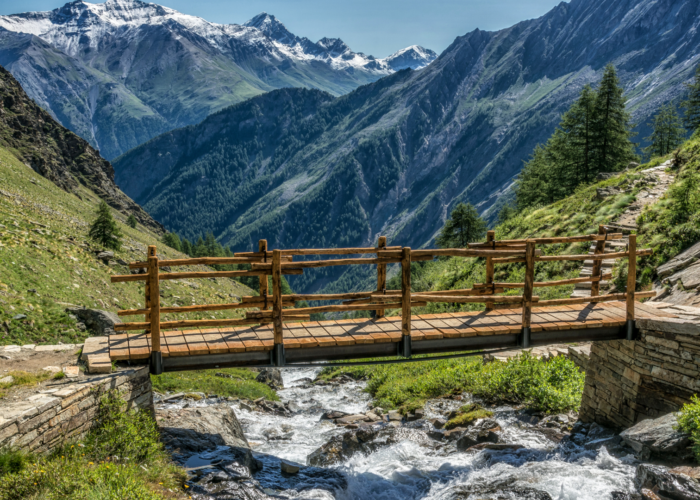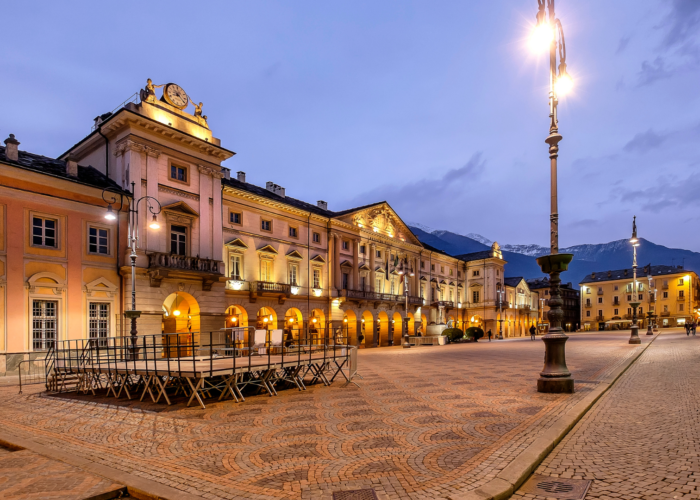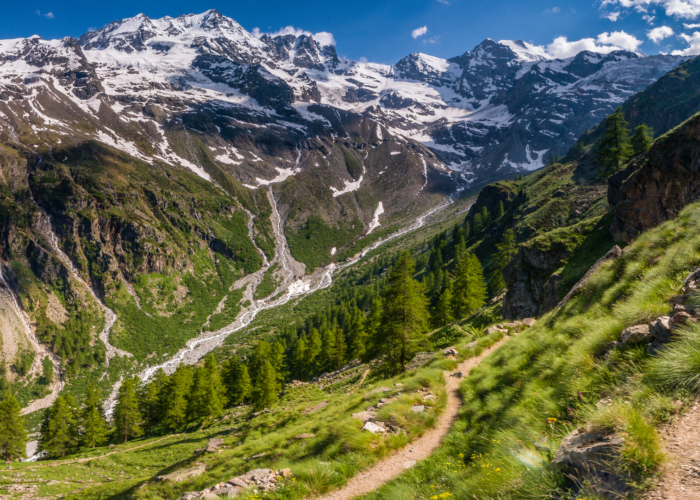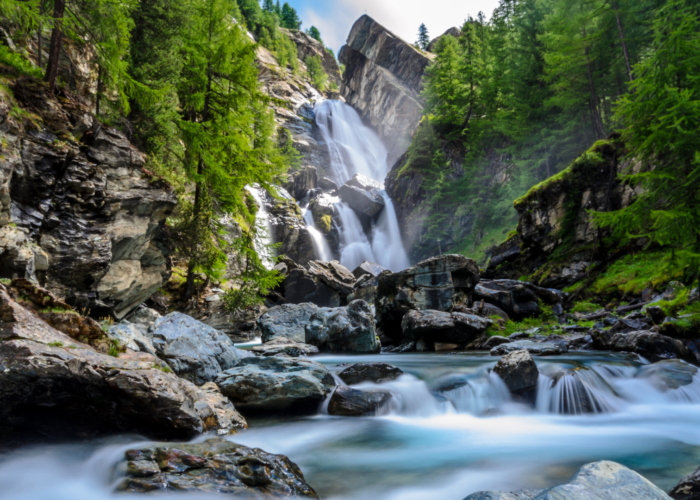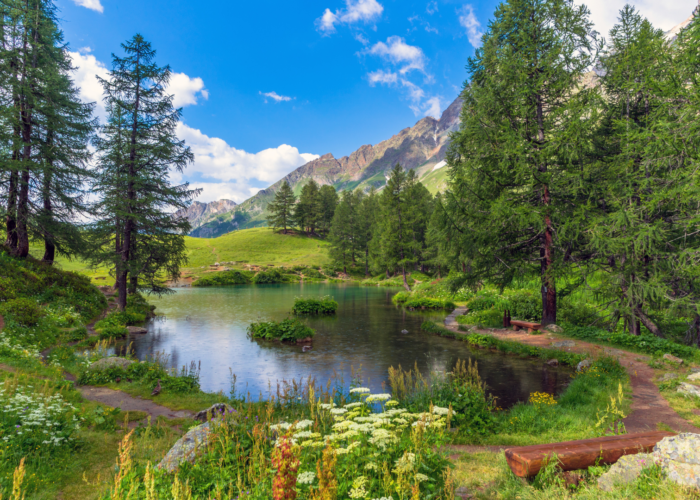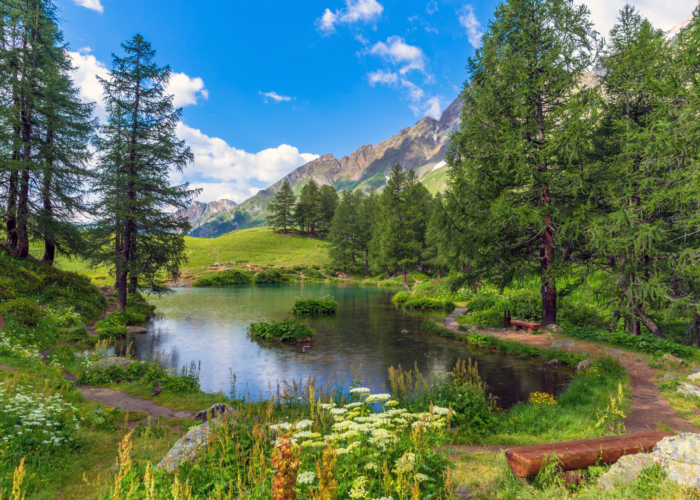AOSTA VALLEY: NATURE, TRADITIONS AND CASTLES
The Aosta Valley is a surprising territory: the smallest region in Italy, among the first to be established, it is home to the highest peaks in the Alps, Mont Blanc, Matterhorn, Monte Rosa and Gran Paradiso, and it is in this region that the Gran Paradiso National Park, the first in Italy, was established in 1922.
But, there are many other interesting facts about this magnificent region that we would like to introduce you to, some of which we have already presented in this green tour.
DAY 1: AOSTA
In the early afternoon, arrival and guided tour of the historic centre. You’ll be able to admire the Romanesque-Gothic Sant’Orso (Saint-Ours) and its beautiful cloister, the majestic Porta Praetoria, the Roman Theater and its impressive facade with overlapping arches, Piazza Chanoux and the Neoclassical Town Hall, the Cathedral, the Criptoportico Forense (Forensic Cryptoporticus), Roncas Palace and the central Croix de Ville.
At the end, return to the hotel, dinner and overnight stay.
DAY 2: LILLAZ WATERFALLS AND COGNE
After breakfast, we will meet the guide and depart to the Cogne Valley, a magical destination included in Italy’s oldest natural park: Gran Paradiso National Park. This park is home to and protects a great biodiversity: from the ibex, symbol of the Park, to other mammals, such as chamois and marmots, to birds, such as the golden eagle and the bearded vulture, and countless butterflies, insects and flowers.
You will enjoy a pleasant hike in a spectacular environment of coniferous forests, alpine meadows, streams, lakes, glaciers, moraines, rocky peaks and waterfalls and in particular, you will stop and admire the magnificent Lillaz waterfall. (It is strongly recommended to wear mountain boots on this excursion).
Later, we will head towards Valnontey, the real heart of the park and continue our hiking. After lunch, you will walk or take the shuttle bus down to Cogne. You will stroll through this charming village, which has preserved its proud heritage: you will visit the Ethnographic Museum “Maison Gérard-Dayné”, the parish church and a bobbin lace workshop, where you will see lacemakers at work. A testimony of the village’s mining past is the centuries-old Doctor Grappein’s iron fountain that reminds us of an important deposit of magnetite that fed the Aosta steelwork.
At the end of the visit, return to the hotel, dinner and overnight stay.
DAY 3: SAVOY CASTLE – GRESSONEY LA TRINITÈ – NOVERSCH
Breakfast, meeting with the guide and departure to Pont-Saint-Martin.
Along the way, we will stop by the river Lys to admire the longest single-arch Roman Bridge and at the Tour d’Héréraz, where we will admire the Moretta bridge, an ancient and evocative arch bridge over a deep and impressive gorge. Once in Gressoney-Saint-Jean, you will enjoy a guided tour of the Savoy Castle, a prestigious residence with an eclectic style, from liberty to neo-gothic, built by Queen Margherita of Savoy between 1899 and 1904. It looks like a fairy-tale castle full of exquisite wooden ornaments and elegant decorations. The residence, with a unique view of the Monte Rosa glaciers, is set in a beautiful wooded park with a botanical garden rich in mountain flowers.
Time for lunch in the Gressoney-Saint-Jean, a charming tourist village with an ancient parish church and a small lake.
In the afternoon, we will enjoy a comfortable hike downhill from Gressoney-La-Trinitè to Noversch: we will pass through some small Walser villages and discover the architecture and the unique culture of these people of Germanic origin. On the way back, we will stop at the parish church of Issime, which boasts a fine baroque altar, a popular universal judgment fresco on the facade and some beautiful pieces of sacred art.
Return to the hotel, dinner and overnight stay.
DAY 4: ISSOGNE CASTLE
After breakfast, meeting with the guide and departure for the Issogne Castle, the best preserved in the region, with original ceilings and furnishings from the late 15th century.
Frescoes and graffiti will take you back in time, in the polite life of the time: in particular, the frescoes in the lunettes of the portico depict scenes of daily life, medieval activities and stories of the Challant family, the illustrious inhabitants of the castle.
At the end of the visit, you can taste typical products and delicatessen, and then return home.

